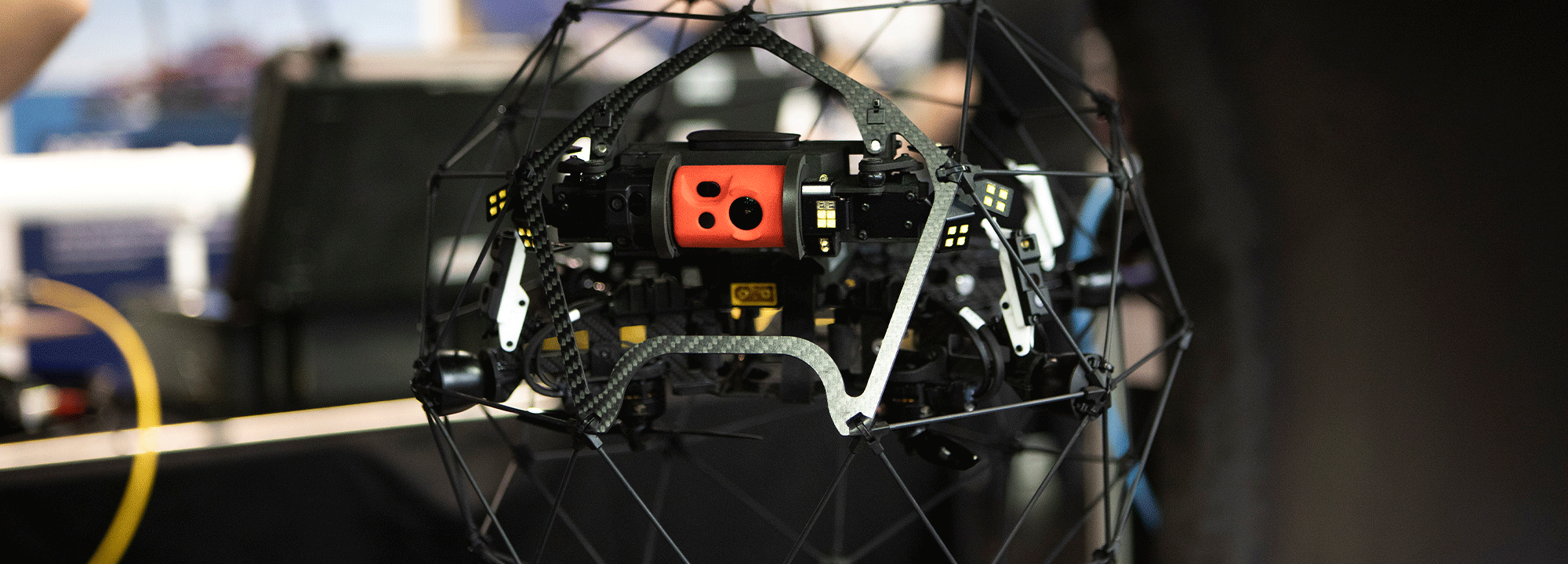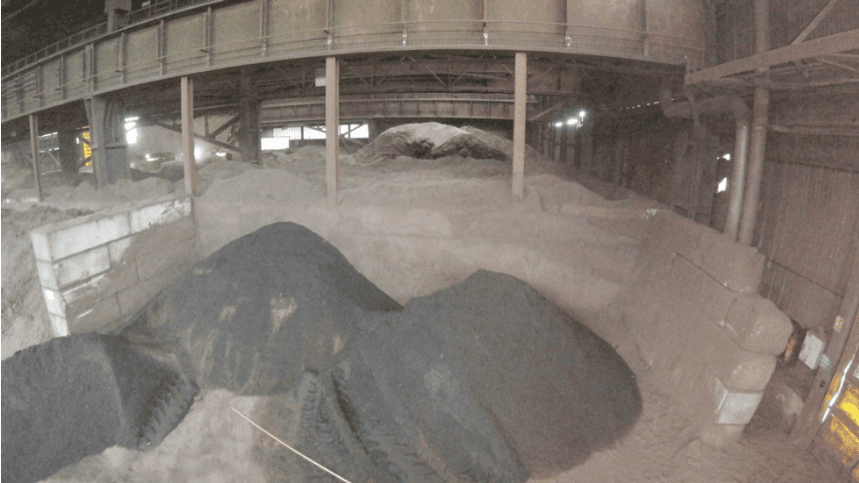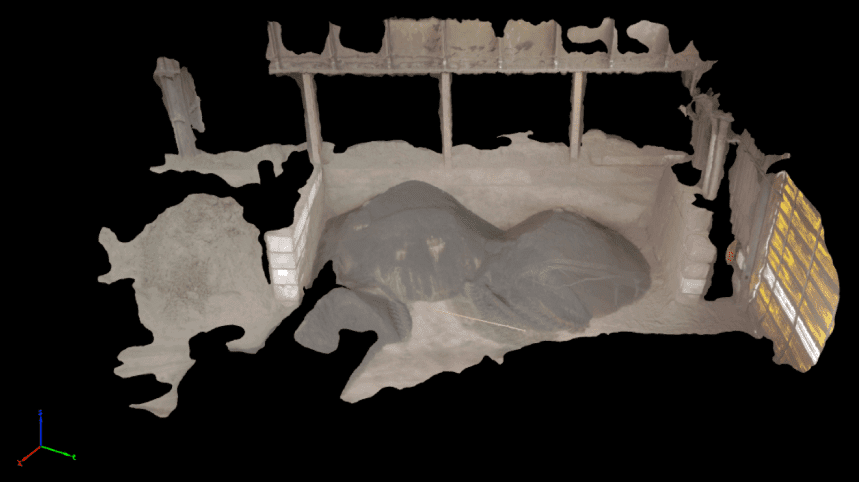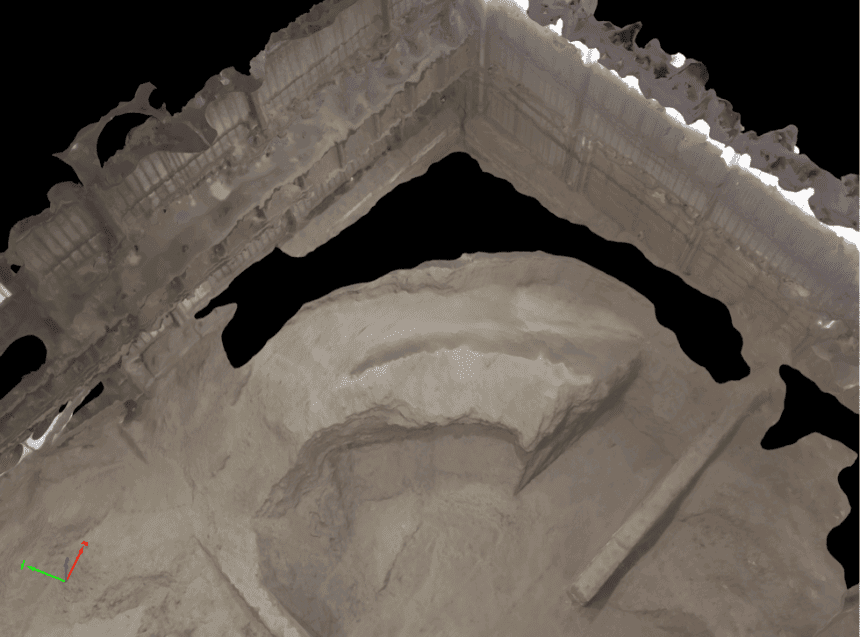ELIOS 2 TESTED FOR INDOOR STOCKPILE VOLUMETRY
A company that recycles industrial waste tested the Elios 2 for indoor stockpile volumetry and found that the 3D maps it helped produce were accurate to within just one centimetre.
A company that recycles industrial waste tested the Elios 2 for indoor stockpile volumetry and found that the 3D maps it helped produce were accurate to within just one centimetre.
BENEFITS IN A NUTSHELL
INCREASED REVENUE OPPORTUNITIES
Using the Elios 2 to map indoor stockpile volumetry can help uncover new revenue opportunities since it can allow for more efficient processes, allowing facilities to always stay at capacity.
INCREASED FREQUENCY OF DATA CAPTURE
Elios 2 captured raw visual data suited for 3D reconstruction relatively easily, which means data could be captured monthly to assess the volume of stockpiles previously left unmeasured.
LEGAL COMPLIANCE
Relevant laws limit the amount of metallic dust and other materials that can be stored in one location. Being able to accurately measure the volume of stockpiles will help ensure legal compliance.
INTRODUCTION
The Elios 2 was tested by a company whose primary work is the recycling of industrial dust and related residue. The company receives dust from various other companies, treats it (i.e., recycles it), and then returns it to the companies in a usable form.
This company generally works with about 30 large piles of materials at any given time, which are all located indoors in two different main halls. The piles sit in well-defined lodges, separated by small concrete walls.
Once treated, the recycled dust must be returned to the company from which it originated. Each company’s supply of raw materials must be kept separate from that of the other companies. This means that a key part of the work the company does involves tracking the material each client provides to make sure it does not get mixed with that of any other clients.
Currently, the dust recycling company only measures the industrial dust they recycle as it is taken in for processing. This is done by weighing the transport truck in which the dust arrives, then subtracting the weight of the truck.
After this first measurement, no further measurements are taken during storage, so the company effectively does not have data on the mass or volume of any of their stockpiles at any given time, only the initial weight.
CUSTOMER NEEDS
Aside from weighing materials as they enter their facilities, the company has no system in place for measuring and tracking the piles of industrial dust they store for treatment. The lack of data is significant—estimates by different personnel on site have varied by more than 200%.
Without data about a pile’s volume, the company cannot accurately predict how long it will take to treat the materials in each stockpile.
The lack of data also means that there is no way to verify whether they are compliant with relevant laws concerning the number of different materials that can be stored in a specific location at one time.
To close its data gap, the company needs to find a way to measure the volume of their stockpiles that will be accurate, cost-effective, and that will work in the indoor environment in which they store the dust they recycle.
SOLUTION
Company personnel decided to team up with Flyability to test the Elios 2 for indoor stockpile volumetry, to see if it might provide the right solution to help the company keep track of the volume of the different piles of industrial dust they store.
A 3D map of the stockpile pictured above.
The measurement of stockpile volumes has historically been an expensive and labour-intensive process, factors that have limited the ability of construction, mining, aggregates and other industries that work with large piles of materials from conducting regular measurements.
In addition to its expense, stockpile volumetry data collected through manual methods can be inaccurate and subject to large variances, making it an unappealing investment for many companies.
But in recent years, drones have been successfully employed to measure the volume of stockpiles accurately at a relatively low cost.
By collecting raw aerial data and processing it using mapping software, drones can enable the creation of 3D and photogrammetric maps of stockpiles. These maps provide a quick, accurate, and relatively inexpensive depiction of a stockpile’s volume, creating a radical new tool for industries to use in tracking their raw materials.
But the industrial dust recycling company faced an additional challenge. The materials they recycle are located indoors and most drone models used for stockpile volumetry do not operate well indoors, where there is typically no GPS control, poor lighting, high amounts of volatile particulates, and a high possibility the drone might crash or collide with something.
The Elios 2 provided a unique solution for the company’s needs. Built to fly indoors and operate in dark and dusty environments, the Elios 2 sits in a cage that allows it to collide with objects and continue flying, making it the ideal drone to test as a possible tool for mapping the company’s stockpiles of different kinds of dust.
RESULTS
In three different test flights, the Elios 2 collected raw aerial data of three indoor piles of industrial dust. This data was then processed using photogrammetry software Pix4Dmapper and turned into 3D models, which allows for the computation of the volume of each stockpile.
Data collected by the Elios 2 was used successfully to map all three piles from each test.
A few minutes of flight (one-three minutes) were enough to collect the footage for a stockpile. Processing the maps was also quick since there was not a huge amount of data that needed to be converted.
Before measuring the volume of a pile, the 3D model needs to have a correct scale. This was achieved by measuring the lodges. After scaling the model, a new set of objects were measured and used for validation.
The maps produced were quite accurate. Measurements were found to be accurate to within just one centimetre of error for a 2.4-metre length.
Pix4D offers a tool dedicated to stockpiling volumetry. While this tool was developed for an outdoor stockpile, we were able to demonstrate that it can also be used in an indoor context to find volume measurements. Because the piles are in well-defined lodges, it is possible to localise them easily and reuse the same baseline for repeated measurements. Pix4Dmapper can simplify the workflow in cases like this.
CONCLUSION
Based on the results of these three tests, the company is optimistic that they may soon be able to regularly track the volume of their stockpiles
Using the Elios 2, the dust recycling company could potentially measure its stockpiles once a month or more, which will help ensure that it follows laws concerning the storage of stockpiles of various materials.
These volume measurements can also help improve projections for the time needed to process each pile, leading to an increase in overall efficiency for its operations. Finally, the volumetry data may open up new revenue opportunities for the company by helping its facilities stay at capacity throughout the year, and avoid both falling significantly below capacity or jumping too far ahead of capacity due to a lack of data.
Find out more about the Elios 2 or contact us today for a no-obligation chat.
This story was originally posted on https://www.flyability.com/casestudies



